The Most Famous Record You Have Never Heard Of (Or The Most Obscure Record You Have Heard A Hundred Times)
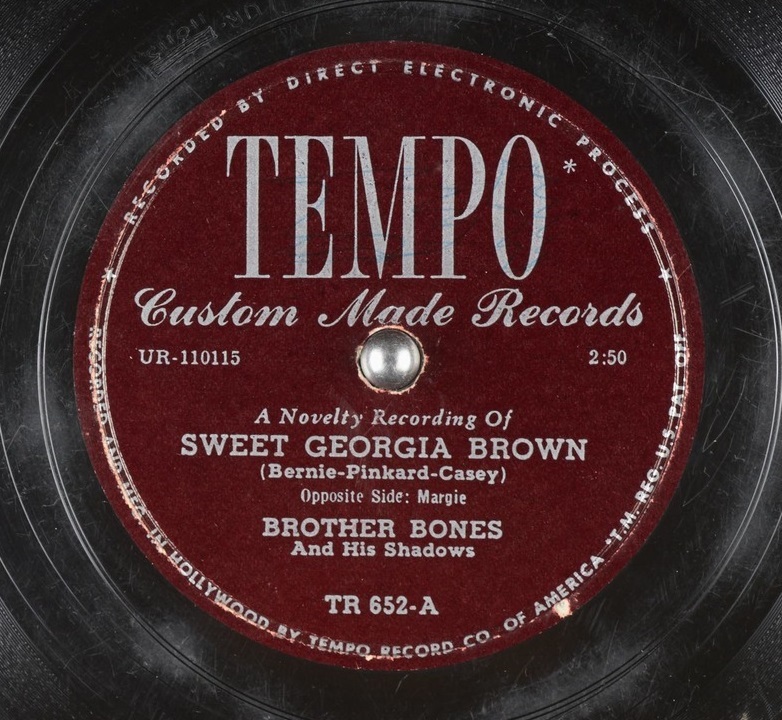
How can an old jazz record be both one of the most famous yet obscure recordings of its era? Let’s examine Sweet Georgia Brown, a late 1940’s platter by Brother Bones and his Shadows for an answer.
And a quick side note, for those of you who usually tune out of these old music posts, I think this one will be worth your time because it is a recording that you may find really familiar (even though you may not know it yet.)
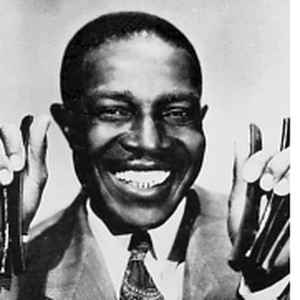
Brother Bones (otherwise known as Freeman Davis) was no spring chicken in the late 1940’s when he recorded this version of Sweet Georgia Brown. Born October 4, 1902 in Montgomery, Alabama, Davis found his way to Long Beach, California.
Davis became known as Whistling Sam while working there as a shoe shine in a barber shop. Some have claimed that Davis could whistle on the sidewalk and coax business into the shop. He attributed his whistling ability to his mother who whistled during his childhood. Davis’ other talent was in playing the bones, hence the stage name.
It has been reported that the head of Tempo Records discovered Davis performing in a Los Angeles Chinese restaurant at some point in the late 1940’s and signed him to do some novelty recordings.
This recording session is cloaked in obscurity and has sent me farther down a series of rabbit holes than anything I have written on up to now. In general, jazz fans have done a really thorough job of documenting recording session personnel going back to the earliest days of making records. Sometimes you can follow a performer, other times a record label or perhaps one of the backing musicians. But here? Nada. There is almost no information online about Tempo Record Company of America, almost none about Freeman Davis/Brother Bones, and even less about this particular record.
Tempo seems to have been a fringe label that recorded a little of this and a little of that, with no real stars on its roster. In fact, it would be a pretty sure bet that this was the biggest hit the Tempo label ever had. And quite a hit it was.
The song itself was first written by bandleader Ben Bernie and Maceo Pinkard. Bernie’s 1925 recording hit the charts in June of that year when it zoomed to the top spot and stayed there for five weeks. The song has been recorded innumerable times since.
This record seems to have been one of four 1920’s standards that featured Davis whistling and playing the bones. OK, so what are “the Bones”?
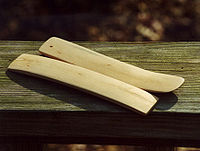
As a percussion instrument they go way back to the 19th century in the US and long before that in Europe. They started out as 5-7 inch curved pork rib bones, eventually becoming made of wood. When played they sort of mimic the sound of a tap dancer.
OK. So far we have a guy nearing age fifty who whistles and plays the bones. So who were “His Shadows? There were two of them, but I can give you only half an answer to that question.
One of them was a guy named Herb Kern. Kern recorded many things on the Tempo label during this period, generally on the Hammond Organ. But he was not playing the Hammond organ here. If there are any guesses to what he was playing, I will . . . oh never mind, because nobody has ever heard of it (including me before writing this.)
Ready? A Novachord. The Novachord is considered to be the original electronic synthesizer. Manufactured by the Hammond Company (of B3 organ fame) it was a commercial flop as only 1,069 of them were built between 1938 and 1942. Weighing in at around 500 pounds, the device used 163 vacuum tubes and over 1,000 custom capacitors. It was unwieldy for most organists as it required many adjustments to get changes in sound.
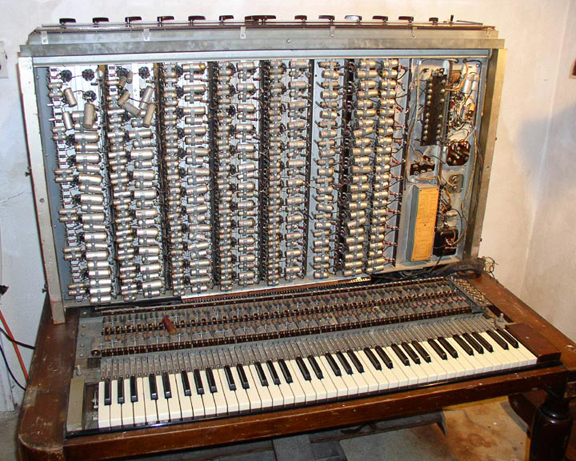
Photo of a Novachord undergoing restoration. This view shows it with “the hood up” and in “service position”.
A debut at the New York Worlds Fair was not enough to give the Novachord any real market traction. It did, however, eventually find its niche in providing celestial sound effects in many sci-fi movies of the 1950’s and the Screen Gems television theme of the 60s.
One of those 1,069 Novachords did, however, find its way to the Tempo studio and it was used extensively in a series of records in which Herb Kern on the Hammond organ teamed up with a fellow named Lloyd Sloop on the Novachord. This duo seems to have been responsible for the bulk of the Tempo catalog in the 1948-49 period. Why the Novachord was manned by Kern instead of Sloop on this session (at least according to what little has been written) is one in a long list of questions which shall go unanswered.
The only other guy on the record is the tenor saxophone player, and his identity is a total mystery. I can find no evidence of any sax player who recorded for Tempo for even a short time in this era. All of these small record companies made use of “session players” who came from the local musician’s union hall, so perhaps all we can conclude is that one of the most listened-to saxophone performances of all time gets no better credit than Anonymous Tenor Sax Guy. (1) I will credit him with a pretty decent solo, though.
The recording date is another mystery. Most sources date this record to September of 1948. But those sources almost have to be wrong. The American Federation of Musicians’ famous recording strike of 1942 through 1944-45 was followed by a lesser known one, which banned recording for virtually all of 1948 before resolution in December of that year.
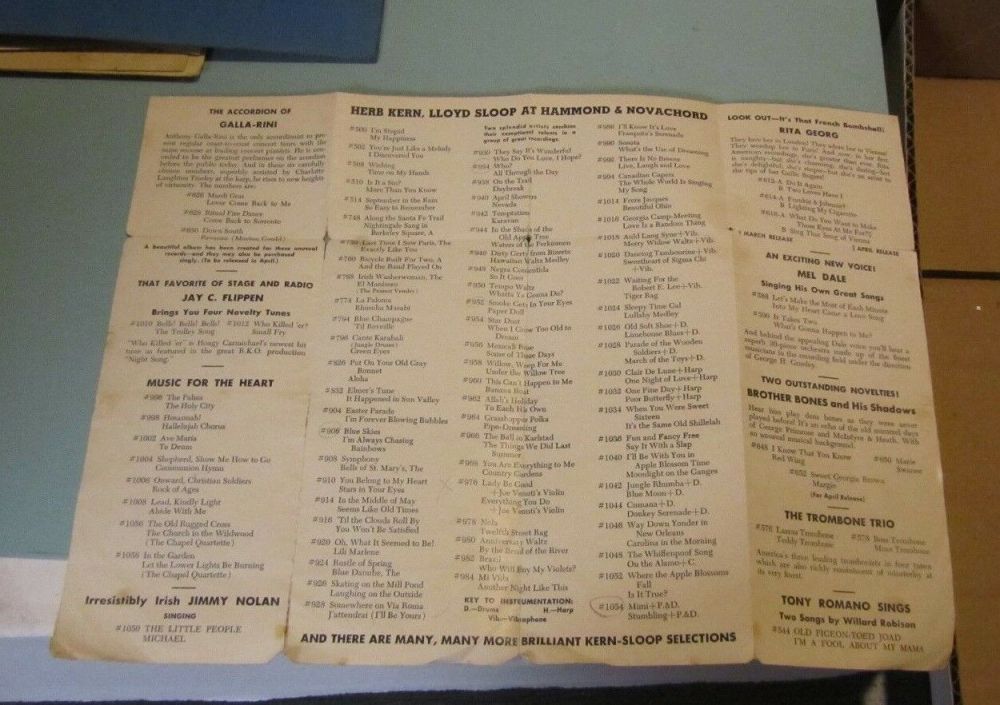
One side of the Tempo Records fold-out catalog for Spring, 1948. Note that this disc was originally planned to have an April release. The musicians recording strike undoubtedly caused Tempo and others to slow down and stretch releases out as the strike drug on. This record was delayed by about six months.
A recording date of late 1947 (and not September of 1948) is supported by mention of the disc in Tempo’s Spring, 1948 catalog and also in Billboard Magazine’s August 28, 1948 issue where it reported on “Advance Race Record Releases”. Both sources cite the disc’s actual catalog number of TR 652. Billboard’s advance release notices were generally published about two weeks before actual release, which is probably where the September of ’48 date comes in.
And about that “race records” thing – that was how the recording industry referred to discs intended primarily for consumption by customers of color, a category that was (thankfully) nearing the end of its long life in the trade by then.
But a funny thing happened. After getting a start in cities with large African-American population centers, the record began gaining steam with general audiences, hitting Billboard’s mainstream singles chart in December, 1948 and staying there for twelve weeks before finally dropping off in March, 1949.

Along the way the record hit Billboard’s charts for best selling retail records, most-played jukebox records and records most played by disc jockeys. Oh yes, the record also landed Brother Bones on the covers of both Billboard and Cashbox, the leading magazines of the recording industry.
Most records by one hit wonders are gradually forgotten, but this one took another unexpected turn when it was adopted as the theme song for the Harlem Globetrotters basketball team in 1952 . This would have been the same year Meadowlark Lemon wrote a letter to the team requesting a tryout and before integrated professional sports was something to take for granted.
So yes, this exact recording is the Harlem Globetrotters theme song. Could this be the most durable theme song for any organization anywhere? It is still being prominently featured by the team (albeit after a modern remix) over seventy years after being committed to wax and shellac.
What is it about this oddball record that has made it so appealing and endearing? The strange combination of sounds serves to separate this record a bit from its era, perhaps making it more relevant younger generations. And the relaxed but out-of-balance rhythm of the Novachord and saxophone sort of makes it defy classification. Is it jazz? Is it blues? Is it R&B? It seems to be all of them and none of them at the same time.
I have been listening to this record over and over and over – which I usually do in preparation for these pieces. Most of the time I will hit a wall where my mind wanders and I just stop listening. There is something about this one, however, that makes me smile and get into it every time that unknown guy asks “Hey man, who’s that cat comin’ down the street?” I guess we can now know how what started as a novelty for black audiences became one of the most beloved recordings ever. Come on, hasn’t it always made you happy whenever you have heard it?
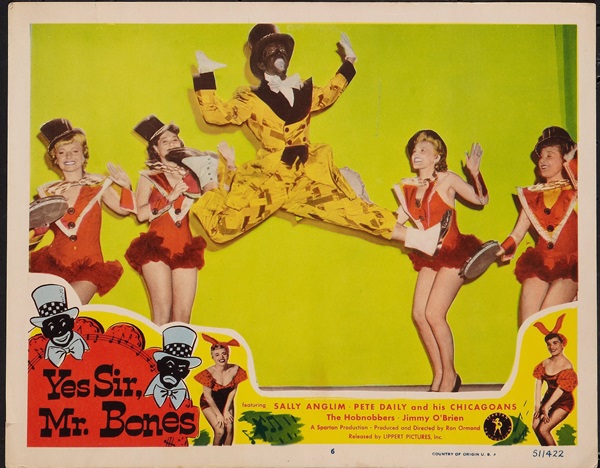
But back to our star. His newfound fame landed him a part in the low budget 1951 film called Yes Sir, Mr. Bones. In a movie that could never, ever, ever be made today, the cringeworthy plot involves a young boy who finds himself in a home for retired minstrel performers and uses flashbacks to recreate some of the old acts.
It is difficult to know what to do with a movie like this today. As of early 2019 (if not long before) the whole blackface thing is rightly understood to be an insulting vestige from the Jim Crow era and something that belongs in the garbage. However, the black performers of the day – especially those outside the mainstream such as Davis – had few options open and this film may be the only video record of his showmanship (which the above clip demonstrates, the second number particularly).
As another aside, the movie also featured Scatman Crothers in an early film role, likely his first (contrary to a later film which Wikipedia credits as his earliest).
I have seen a single reference to Freeman going to work for the Globetrotters in the 50’s, but this was a casual aside in an otherwise not-terribly accurate long ago memory about Davis’ recordings. Sadly, the team’s website says nothing about its longtime theme song or the artist whose performance has become so closely identified with the organization. Don’t worry Globetrotters, I’ve got your back on this.
Freeman Davis died in 1974 at the age of 71 and is buried in his longtime home of Long Beach, California. And thus ended the tale of a man who died in almost complete obscurity yet who recorded what is argued to be one of the top ten most listened-to recordings in history (at least according to the brief tribute to Davis at FindAGrave.com).
I typically would have waited a bit to post this, having featured a musical subject just three weeks ago. It seemed fitting, however, that Mr. Davis get some recognition. And now seemed like the appropriate time, being the last week of Black History Month, and all. Five bucks says that this will be the only mention he will get this year, which is a shame.
Many of you have spent your lives listening to the first several seconds of this record and thinking “Ahhh, the Harlem Globetrotters.” It is my hope that next time you hear the song you will think “Ahhh, Freeman Davis, that whistlin’ man with the bones”. For at least a little while he sure had himself a ball.
Notes
(1) A web page on Brother Bones the Alabama Music Office (alabamamusicoffice.com) cites some notes on a CD reissue indicating that Joe Darensbourg is the other Shadow. However, that source also says he was a clarinet player and that the “organ player” was unidentified. There is also a link on the website for the Rhythm Bones Society (rhythmbones.com) to a Library of Congress recording search. That entry credits the performers as “Brother Bones, [bones and whistling] and his Shadows, performers. [Joe Darensbourg, clarinet; unknown trumpet, piano, guitar and drums]”
Darensbourg played both clarinet and sax and is given specific credit on another Brother Bones recording (on which he played clarinet), so he is a possibility. However, one must question why he would get credit on one record and not on another. Also, it is indisputable that there is no clarinet, no trumpet, no piano, no guitar and no drums on this recording. There is an awful lot of wrong information in these sources to give them much credit.
Sources:
Music: YouTube page of the78prof
Much of the biographical information from bonedrymusic.com
Photos:
Opening photo of record label – The Internet Archive at archive.org
Freeman “Brother Bones” Davis from discogs.com
Novachord photo from discretesynthesizers.com
Portion of Tempo Records fold-out catalog from Spring, 1948 from an EBay auction and reproduced on picclick.com
Cashbox Magazine cover from the blog PopBopRockTilUDrop at kimsloans.wordpress.com
Lobby Card from the film Yes Sir, Mr. Bones – item listed for auction June 19, 2011 by Heritage Auctions
Video clip of Freeman Davis from Yes Sir, Mr. Bones posted to YouTube by Ikachina with permission from copyright holder Kit Parker Films.

That won’t be stuck in my head all day. 🙂
Also, I totally didn’t just spend 10 minutes watching Novachord videos on YouTube.
There is something fascinating about that mid century period when people had ideas for electronics, but the tech wasn’t quite there yet.
LikeLike
I know, that Novachord blew me out of the water, I had never known such a thing existed. Who would have thought that the electronic synthesizer was being built before we got an automatic transmission in cars. I can only imagine the grumbling from the guys who had to keep them working.
And admit it – there are a lot worse songs to have stuck in your head. 😀
LikeLike
You’ve dived down a rabbit hole and found absolute gold.
It’s also hard to know which is the most fascinating – Davis’s story (or lack thereof), the Novachord, or an obscure record gaining such prominence. It’s hard to say but all three are terrific nuggets of new knowledge.
LikeLike
I know! I started out to do a straightforward piece on “Hey, I found the Globetrotters theme” and kept turning into side alleys that could almost have stood up on their own.
I wonder what kind of riches await now that I am the worldwide online authority on this? 🤔
LikeLike
+1, wow no idea on any of those three counts.
The Novachord maintenance person must have been the grandfather of today’s photocopier maintenance person. Technical skill and endless patience. I was thinking that must have been a heck of an expensive thing to make, sure enough it seems that in 1939 the Novachord cost $1,900 which one site calculates out to $34,400 today.
Around 1:55 the Novachord stirs memories of an old electronic organ being played in church by a blue haired old lady with cat’s eye glasses. 🙂
LikeLike
Can you imagine the electrical amperage that something with 163 vacuum tubes would suck down? Not to mention the cost of keeping it running. Just one more great idea that came along before the available tech could catch up.
LikeLike
Thanks for that terrific history! I know “Sweet Georgia Brown,” of course, but had never heard of Brother Bones or most of the other people you mentioned. The Novachord was also news to me. This post obviously required a lot of legwork, and I appreciate it.
LikeLike
Thanks, Noah! Yes, it turned into some deep dives. It is fascinating looking at some of the old issues of Billboard that are on Google Books.
From what I could gather, after this record hit it big the record company signed Freeman to a new contract and he went on to record several more records, none of which went anywhere at all. I felt a little sorry for the folks at Tempo, but then they surely raked money off of this one for years, later re-issuing it on 45 rpm discs.
LikeLike
The minute I saw the title, I remembered watching Meadowlark Lemon and the Harlem Globetrotters with my mother, who loved them—and led me to watch their astonishing moves with amazement.
I am in awe of your blend of extensive research and nicely flowing prose, and I learned a great deal. A pleasure to read!
LikeLike
Why thank you! I never got to see the Globetrotters in person but watched the Saturday morning cartoon religiously. They are an interesting story too, coming from the days of segregated pro sports and turning into a first rate entertainment experience that has lasted decades.
LikeLike
Pingback: When Cool Was New – The Miles Davis Nonet Plays Jeru | J. P.'s Blog
Pingback: 52 | J. P.'s Blog
Pingback: No Gal Made Has Got a Shade on Sweet Georgia Brown – The Hits Just Keep On Comin'
Joe Darensbourg might be the sax player of this recording. The Joe Darensbourg Quintet supported Brother Bones on other Tempo recordings including Me and My Shadow.
https://en.wikipedia.org/wiki/Joe_Darensbourg
LikeLiked by 1 person
Thanks for trying to bringing more information to this murky subject. I agree that it’s certainly possible. It would probably be possible to find the local for the musicians union and see if they have maintained session documentation. I understand that they likely do, but I also understand that they charge some hefty research fees (probably full union rates) for access.
LikeLike
I enjoyed the photo that included Frank Loesser, who composed Guys and Dolls, among many other Broadway musicals. That may be the first photo of him I have seen.
Lee Shell
Dallas
LikeLike
There really is something for everyone here. 🙂
I was so happy to have found that cover with Davis (way, way deep down in Google Books) that I had forgotten all about Loesser being in the shot.
LikeLike
I would love to play “Sweet Georgia Brown” for 100 random listeners and see how many of them come up with the Harlem Globetrotters. A bigger number than we’d guess, I bet you. The ‘trotters and their “Magic Circle” were a “slam-dunk” in my mind as soon as I saw the song title. But not the Novachord – that’s a new one on me. As are the Bones.
LikeLiked by 1 person
Haha, the Novachord was a new one on me too. All those years I thought it was an organ with an odd combination of toggles flipped.
LikeLike
The Novachord was used for years after it went out of production to create “other-worldly” musical effects for sci-fi movies. It was also used for “wind” sounds in Walt Disney’s Mickey Mouse cartoon “The Little Whirlwind.” Probably the best-known Novachord player was Buddy Cole, who was married to one of the King Sisters.
LikeLiked by 1 person
Thanks for the additional background! I find the Novachord one of those musical/technological dead ends that is endlessly fascinating.
LikeLike
Your question on how much current a Novachord drew made me curious. (And when that happens, watch out!) I found online an image of the manufacturer’s plaque which indicates it used 440 watts of 115 volt AC; 611 watts with an additional amplifier attached. Sorry that WordPress doesn’t allow me to add it to my post. Hammond warned against powering more than one additional amp off of the Novachord itself; extra amps could be added, but should be powered directly off a separate outlet. This is actually much less current than, say, a toaster or a Mr. Coffee.
LikeLiked by 1 person
Wow, that’s some impressive research!
LikeLike